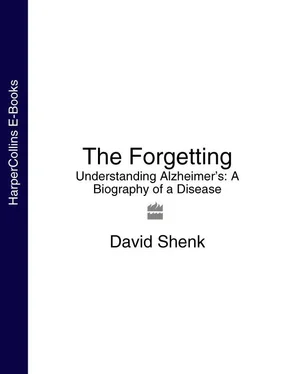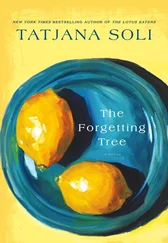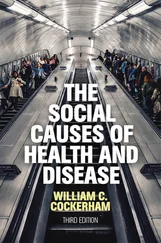These days, a decent neuropsychologist can maneuver within this paradox—can make a diagnosis of probable Alzheimer’s with a confidence of about 90 percent—through a battery of tests. The process almost always begins with this simple quiz:
What is today’s date?
What day of the week is it?
What is the season?
What country are we in?
What city?
What neighborhood?
What building are we in?
What floor are we on?
I’m going to name three objects and I want you to repeat them back to me: street, banana, hammer.
I’d like you to count backwards from one hundred by seven. [Stop after five answers.]
Can you repeat back to me the three objects I mentioned a moment ago?
[Points at any object in the room.] What do we call this?
[Points at another object.] What do we call this?
Repeat after me: “No ifs, ands, or buts.”
Take this piece of paper in your right hand, fold it in half, and put it on the floor.
[Without speaking, doctor shows the patient a piece of paper with “CLOSE YOUR EYES” printed on it.]
Please write a sentence for me. It can say anything at all, but make it a complete sentence.
Here is a diagram of two intersecting pentagons. Please copy this drawing onto a plain piece of paper.
This neurological obstacle course is called the Mini Mental State Examination (MMSE). Introduced in 1975, it has been a part of the standard diagnostic repertoire ever since. The MMSE is crude but generally very effective in detecting problems with time and place orientation, object registration, abstract thinking, recall, verbal and written cognition, and constructional praxis. A person with normal functioning will score very close to the perfect thirty points (I scored twenty-nine, getting the date wrong). A person with early-to-moderate dementia will generally fall below twenty-four.
The very earliest symptoms in Alzheimer’s are short-term memory loss—the profound forgetting of incidents or conversations from just a few hours or the day before; fleeting spatial disorientation; trouble with words and arithmetic; and some impairment of judgment. Later on, in the middle stages of the disease, more severe memory problems are just a part of a full suite of cognitive losses. Following that, the late stages feature further cognitive loss and a series of progressive physical disabilities, ending in death.
One brilliantly simple exam, the Clock Test, can help foretell all of this and can enable a doctor to pinpoint incipient dementia in nine out of ten cases. In the Clock Test, the doctor instructs the patient to draw a clock on a piece of paper and then draw hands to a certain time. Neurologists have discovered that patients in the early stages of dementia tend to make many more errors of omission and misplacing of numbers on the clock than cognitively healthy people. They’re not entirely sure why this is, but the accuracy of the test speaks for itself.
A battery of other performance tests can help highlight and clarify neurological deficiencies. The Buschke Selective Reminding Test measures the subject’s short-term verbal memory. The Wisconsin Card Sorting Test gauges the ability to deduce sorting patterns. In the Trail Making Test, psychomotor skills are measured by timing a subject’s attempt to draw a line connecting consecutively numbered circles. Porteus Mazes measure planning and abstract-puzzle-solving ability.
If the patient performs poorly in a consistent fashion, the next step will likely involve elaborate instruments. Conveniently for physicians, Alzheimer’s disease always begins in the same place: a curved, two-inch-long, peapod-like structure in the brain’s temporal lobes called the hippocampus (the temporal lobes are located on either side of the head, inward from the ear). Doctors can get a good look at the hippocampus with a magnetic resonance imaging (MRI) scanner, which bombards the body with radio waves and measures the reflections off tissue. A simple volume measurement of the hippocampus will often show, even in the very early stages of Alzheimer’s, a pronounced decrease in volume, particularly in contrast with other brain structures. By itself, the MRI cannot diagnose Alzheimer’s. But it can add one more helpful piece to the diagnostic puzzle.
Other advanced measurements might also help: A positron emission tomography (PET) scan may detect a decrease in oxygen flow or glucose metabolism in the same area. A single photon emission computed tomography (SPECT) scan may catch decreases in blood flow. A moderate to severe amount of slowing in the alpha rhythm in an electroencephalogram (EEG) is often characteristic of dementia. But such measurements are generally not required for a tentative diagnosis. In the face of convincing results from memory and performance tests, and in the absence of any contravening evidence—disturbance in consciousness, extremely rapid onset of symptoms, preponderance of tremors or other muscular symptoms, difficulties with eye movements or reports of temporary blindness, seizures, depression, psychosis, head trauma, a history of alcoholism or drug abuse, any indication of diabetes, syphilis, or AIDS—a diagnosis of probable Alzheimer’s is rendered.
Alzheimer’s disease . The diagnosis is a side-impact collision of overwhelming force. It seems unreal and unjust. After coming up for air, the sufferer might ask, silently or out loud, “What have I done to deserve this?” The answer is, simply, nothing . “I remember walking out of the clinic and into a fresh San Diego night feeling like a very helpless and broken man,” recalled Bill, a fifty-four-year-old magazine editor, to writer Lisa Snyder. “I wondered if there was anything for me to live for.”
It can take a while to sink in. Experienced doctors know not to try to convey any other important information to a patient or family member on the same day that they disclose the diagnosis. They put some helpful information into a letter, and schedule a follow-up.
There is no cure for Alzheimer’s at the present time, and not much in the way of treatment. Historically, the one saving grace of the disease over the years has been that many, if not most, of the people who acquire the disease do not comprehend what is about to happen to them and their families. Now, for better or worse, that has changed. More and more are learning at the earliest possible opportunity what they have, and what it means.
What will they do with the advance knowledge? It is not an easy question. Will they use the time left to get their affairs in order and to prepare themselves emotionally for the long fade? Or will the knowledge only add to the frustration and force them into a psychological spiral to accompany the physiological one?
The Freund House early-stage support group was one experimental approach to tackling such unknowns. When Judy and Irving created it in 1997, they weren’t sure it would work. Could people struggling with memory loss, spatial disorientation, and confusion actually strike up a meaningful relationship with a group of strangers? They had to assemble just the right team. “We had to turn many people away,” said Judy, “because we didn’t feel they were right for a support group. They weren’t introspective enough. They weren’t bothered enough.”
The group was also temporary by design. As participants lost the ability to contribute, they would be eased out of the group, and perhaps admitted to a middle-stage group like the one that Judy ran down the hall. In that group, volunteer caregivers always accompanied patients to the restroom and back, because otherwise they would get lost. Most, not all, still responded to their own name. After a cafeteria-style lunch, everyone came together in a circle to sing fun songs together, like the theme from Barney :
Читать дальше












